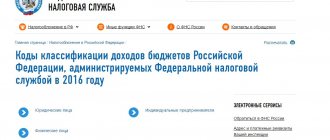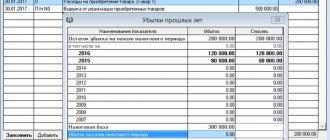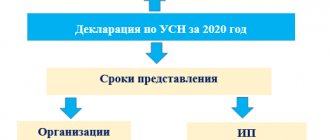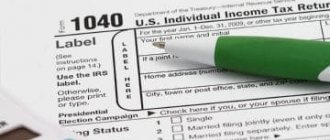USN, OSNO, PSN, NPD, Unified Agricultural Tax: for some this is a meaningless set of letters, but for an entrepreneur it is a direct indication of what his tax burden will ultimately be. To learn how you can compare taxation systems in order to legally reduce payments to the budget when doing business, read the article “Taxation systems: how to make the right choice?”
And for those who still have questions or those who want to get advice from a professional, we can offer a free consultation on taxation from 1C specialists:
Free tax consultation
In our service you can prepare a notification about the transition to the simplified tax system absolutely free of charge Income minus expenses (relevant for 2021):
Create an application for the simplified tax system for free
You can find out the general provisions of the simplified taxation system, relating to both the Income simplified taxation system and the Income minus expenses simplified taxation system option, in the article USN 2021: all about the pros and cons of the simplified tax system with examples.
This article is devoted only to the specifics of the simplified tax system with the object of taxation “Income minus expenses”.
How to calculate the amount of tax on the simplified tax system Income minus expenses?
What is the simplified tax system “income minus expenses” in 2021?
The simplified taxation system has two varieties, which differ from each other in the procedure for determining the tax base, as well as in the current rates. Let's consider, using the simplified tax system as an example, income reduced by expenses.
The use of this system is regulated by the Tax Code of the Russian Federation, as well as by regional legislation. The use of the simplified tax system assumes that the taxpayer, instead of several taxes, calculates a single tax.
The basis for calculation is the receipts that accrue to the subject’s current account or to the cash desk. The law allows you to reduce revenue received by expenses actually incurred.
At the same time, there is a closed list of them, which is enshrined in the Tax Code of the Russian Federation. There is also a requirement that establishes the need to confirm these costs with documents, and at the time the expense is recognized in the tax base, they must be paid.
Performance indicators are recorded in the ledger of expenses and income, where both income and expenses of the company must be reflected. Based on it, tax reporting is prepared once a year.
Important! During the year, the taxpayer must calculate advance tax payments and transfer these amounts to the budget within the established time frame. The system is available for both individual entrepreneurs and companies.
Conditions for applying the simplified tax system in 2021 for LLCs and individual entrepreneurs
To be able to apply the simplified taxation system, the taxpayer must meet certain requirements.
These include:
- The number of personnel involved under contracts should not exceed 100 people.
- Subjects whose balance sheet value of fixed assets does not exceed 150 million rubles can switch to the simplified tax system. For individual entrepreneurs, this criterion may not be met.
- It is not possible to switch to the simplified tax system for companies whose participation share of other legal entities is more than 25%. This rule also applies to the founders of companies that own all shares of the company and are non-profit organizations or organizations of people with disabilities.
- A company that submits an application to switch to a simplified system cannot have either branches or representative offices.
- To be able to apply the simplified system, it is necessary to comply with the criterion of the amount of income received during the year. Thus, the Tax Code of the Russian Federation determines that it is possible to switch to a simplified tax system if the company’s income for 9 months does not exceed 112.50 million rubles. In addition, the simplified person’s annual income should not exceed 150 million rubles.
If at least one of these criteria is violated, the business entity cannot apply the simplified tax system. Within the established time frame, he must notify the tax authority about this and switch to OSNO.
Important! In addition, this taxation system cannot be combined with Unified Agricultural Tax and OSNO in several areas of activity simultaneously. The taxpayer must choose one of them.
Write-off method based on the cost of each unit
The method is quite simple, since each unit of goods is written off as expenses at the cost of its acquisition.
The write-off method based on the cost of each unit is suitable for those organizations that trade unique single products or with a small range of products.
Example
Volga LLC is engaged in the trade of gas equipment and keeps records of goods at the cost of each unit. Under the supply agreement, in February the organization purchased and paid for a universal boiler that runs on solid and liquid fuels at a cost of 120,000 rubles. In March, the boiler is sold by the Kama organization for 158,000 rubles, which immediately pays for this equipment. This means that Volga’s expenses for September should take into account the cost of purchasing a boiler in the amount of 120,000 rubles.
Tax rate
Tax regulations determine that the rate of a single mandatory payment on a simplified basis is 15%. This is the maximum tax amount for the simplified tax system on income minus expenses. Therefore, this regime is often also called “STS 15%”.
Regional authorities have the right to develop their own legislative acts, which, depending on the characteristics of the territories included in the constituent entity of the federation, as well as the nature of economic activity, can accept differentiated rates from 0% to 15%. At the same time, rates may apply to all simplified workers and those engaged in certain types of activities.
Preferential rates in force in some regions for simplifiers, for whom the base is defined as the subtraction of expenses from income:
| Region of Russia | Tax rate | Activities |
| Moscow | 10% | Applies to certain areas of business activity, provided that the share of this type in total revenue is not less than 75%. These types of activities include: - crop production, livestock production and related services in these areas. -sports activity. -scientific development and research. -activities of manufacturing industries. -activities related to residential care and the provision of social services without residential care. - services for management of residential and non-residential stock. |
| Moscow region | 10% 0% | Applies to certain areas of business activity, provided that the share of this type in total revenue is not less than 70%. These include: - crop farming, livestock farming, their mixed production, as well as related services. – production of chemicals. – production of pharmaceutical products. – production of rubber, glass, cast iron, steel - furniture manufacture. – production of folk art products. - other types of activities listed in Appendix No. 1 to Law 9/2009-OZ of February 12, 2009. It applies to individual entrepreneurs who are based on income minus expenses, and who carry out activities in the areas listed in Appendix No. 2 of Law 48/2015-OZ of April 9, 2015 and No. 3 of Law 152/2015-OZ of 10.07.2015 |
| Saint Petersburg | 7% | The rate applies to all entities using a simplified tax system based on income minus expenses. |
| Leningrad region | 5% | The rate applies to all entities using a simplified tax system based on income minus expenses. |
| Rostov region | 10% 5% | The rate applies to small businesses that apply a simplified tax system based on income minus expenses. The rate applies to entities using a simplified tax system with a base of income minus expenses, carrying out investment activities. |
| Krasnoyarsk region | 0% | Valid for individual entrepreneurs registered for the first time after 07/01/2015 and working in the areas of activity listed in Law No. 8-3530 of 06/25/2015 (agriculture, construction, transport and communications, etc.) |
Example 1
Revenue is 100 thousand rubles. Then the tax under the simplified tax system “Income” will be equal to:
H1 = 100 x 6% = 6 thousand rubles.
If costs make up 50% of revenue, then the tax under the “Income minus expenses” option will be higher:
H2 = (100 – 100 x 50%) x 15% = 50 x 15% = 7.5 thousand rubles.
If costs amount to, for example, 70% of revenue, then the tax for “Income minus expenses” will already be lower than for “Income”
H2 = (100 – 100 x 70%) x 15% = 30 x 15% = 4.5 thousand rubles.
But not everything is so simple... We also need to take into account the impact of tax deductions.
In what case is the simplified tax system of 15% more profitable than the simplified tax system of 6%?
Many business entities have to face the need to make a choice between the 15% simplified tax system and the 6% simplified tax system.
The profitability of the system should not be judged by tax rates. So, in the first case, the base where income is reduced by expenses incurred is subject to taxation. In the second case, the base with full income is taken into account for calculation.
Therefore, when determining profitability, it is necessary to take into account the amount of expenses incurred by the entity for carrying out activities that are taken into account.
Attention! Practice shows that the 15% simplified tax system is more profitable if the share of expenses in the company’s revenue is more than 60%. Therefore, it is recommended to choose the 6% simplified tax system in cases where the company incurs minor expenses for its activities.
In addition, when calculating the simplified tax system of 6%, you can reduce the amount of the single tax by paid contributions for employees to the Pension Fund and compulsory medical insurance, as well as by the amount of the listed fixed payments of individual entrepreneurs for themselves. In this case, the share of expenses at which the simplified tax system of 15% is beneficial is over 70%.
Let's take a closer look at an example.
Comparative analysis of simplified taxation system 6% and simplified taxation system 15% (Expenses 65%)
| Month | Income | Expenses (Salary) | Expenses (Deductions) | STS Income (6%) including paid contributions | Simplified Taxation System Income-Expenses (15%) |
| January | 500 | 250 | 75 | 15 | 26,25 |
| February | 1000 | 500 | 150 | 30 | 52,5 |
| March | 1500 | 750 | 225 | 45 | 78,75 |
| April | 2000 | 1000 | 300 | 60 | 105 |
| May | 2500 | 1250 | 375 | 75 | 131,25 |
| June | 3000 | 1500 | 450 | 90 | 157,5 |
| July | 3500 | 1750 | 525 | 105 | 183,75 |
| August | 4000 | 2000 | 600 | 120 | 210 |
| September | 4500 | 2250 | 675 | 135 | 236,25 |
| October | 5000 | 2500 | 750 | 150 | 262,5 |
| November | 5500 | 2750 | 825 | 165 | 288,75 |
| December | 6000 | 3000 | 900 | 180 | 315 |
Comparative analysis of simplified taxation system 6% and simplified taxation system 15% (Expenses 91%)
| Month | Income | Expenses (Salary) | Expenses (Deductions) | STS Income (6%) including paid contributions | Simplified Taxation System Income-Expenses (15%) |
| January | 500 | 350 | 105 | 15 | 6,75 |
| February | 1000 | 700 | 210 | 30 | 13,5 |
| March | 1500 | 1050 | 315 | 45 | 20,25 |
| April | 2000 | 1400 | 420 | 60 | 27 |
| May | 2500 | 1750 | 525 | 75 | 33,75 |
| June | 3000 | 2100 | 630 | 90 | 40,5 |
| July | 3500 | 2450 | 735 | 105 | 47,25 |
| August | 4000 | 2800 | 840 | 120 | 54 |
| September | 4500 | 3150 | 945 | 135 | 60,75 |
| October | 5000 | 3500 | 1050 | 150 | 67,5 |
| November | 5500 | 3850 | 1155 | 165 | 74,25 |
| December | 6000 | 4200 | 1260 | 180 | 81 |
The considered example shows that in the first case it is beneficial for a business entity to use the simplified tax system of 6%, and in the second case - the simplified tax system of 15%. But you need to make a decision about using one or another system individually, considering your own data when making calculations.
Question answer
Question No. 1 : Contact Plus LLC uses the simplified tax system of 15%. 08/12/17 “Contact Plus” received an advance from JSC “Style” for the subsequent shipment of telecommunications equipment. Does Contact Plus have the right to take into account the prepayment as part of the expenses?
Answer: Since the parties have not fulfilled their counter-obligations (“Style” paid for the goods, and “Contact Plus” did not ship the equipment), “Contact Plus” cannot take into account the expenses in accounting. “Contact Plus” can reduce tax profit only upon the fact of complete shipment of equipment from JSC “Style”.
Question No. 2: Polyus LLC changed the tax regime: from January 1, 2018, Polyus uses the simplified tax system of 15% instead of the simplified tax system of 6%. 11/18/17 Polyus paid JSC Sever an advance payment for the shipment of office supplies and paper (RUB 12,604). The goods were received by Polyus only on 01/12/18. Can Polyus take into account office expenses in the amount of 12,604 rubles? (click to expand)
Answer: Since the office was accepted for accounting after the transition to the new tax regime, Polyus has the right to take into account the amount of the previously paid advance (12,604 rubles) as expenses.
The procedure for switching to the simplified tax system in 2020
The law establishes several opportunities to start using the simplified tax system “Income Expense”.
When registering a business
If a business entity submits documents for state registration of an LLC or opens an individual entrepreneur, he can, along with a package of papers, fill out an application for the transition to the simplified tax system in form 26.2-1. In this situation, when receiving papers with registration data, he also receives a notification about the transition to a simplified system.
In addition, the law makes it possible to make such a transition within 30 days from the date of registration of the business entity.
Transition from other modes
The Tax Code specifies the possibility of making a transition to a simplified tax system when a different tax system is used.
However, such a step can only be taken from January 1 of next year. To start applying the simplified tax system, you must submit an application in the established format to the tax office before December 31 of this year. At the same time, this form must contain the criteria for the right to apply the simplified tax system. They are calculated on October 1 of this year.
To start applying the simplified tax system in 2021, it is necessary that the income of a business entity for 9 months of 2021 should not exceed 112.5 million rubles.
There is no other procedure for changing the tax system in the Tax Code.
Changing the regime within the simplified tax system
The Tax Code makes it possible, at the request of a business entity, to change one system to another within the simplified tax system, i.e., switch from “Income” to “Income expenses” and back. To take this step, you must submit an application in the prescribed format before December 31 of the current year. The application of the new system will begin on January 1 of the new year.
Write off expenses for fixed assets quarterly
Fixed assets are goods or property that are used in the operation of a business and not for resale. Their useful life is more than a year, their cost is more than 100,000 rubles.
The cost of purchasing fixed assets is the initial cost of the property. It is defined as the sum of all actual purchase costs. The main rule is to write off the cost of a fixed asset as expenses in equal shares within one calendar year. You can start writing off from the quarter in which the fixed asset was put into operation. Expenses are taken into account on the last day of the quarter: March 31, June 30, September 30, December 31. Thus, by the end of the year, the acquired property must be completely written off.
Read more about accounting for fixed assets in the article “Special accounting for fixed assets in the simplified tax system.”
Income and expenses according to the simplified tax system 15%
Income
The following cash receipts are recognized as income:
- Income from the sale specified in Art. 249 Tax Code of the Russian Federation;
- Non-operating income included in Art. 250 Tax Code of the Russian Federation;
Income in foreign currency is subject to recalculation on the day of receipt at the current exchange rate. Income in kind - at market prices.
The following must be removed from the income list:
- Income specified in Art. 251 Tax Code of the Russian Federation;
- Income of foreign companies for which the simplified taxation system payer pays income tax;
- Dividends received;
- Income from actions with securities.
Attention! The day of receipt of income is considered to be the day it is received into a bank account or cash register.
Expenses
The list of expenses that can be included in the base when calculating tax is strictly specified in paragraph 1 of Art. 346.16 Tax Code of the Russian Federation. This list is closed and cannot be expanded. Therefore, if the expense incurred is not on the specified list, then it cannot be entered into the database.
All expenses can be entered into the database only after they have actually been paid.
In addition, they must also meet certain requirements:
- Be economically justified;
- Be confirmed by primary documents;
- Used for the main activity.
There is also a list of expenses that definitely cannot be included in the database, this includes:
- Costs for installing an advertising structure;
- Write-off of debts that are impossible to collect;
- Fines, penalties and other payments due to violation of obligations;
- Payment for personnel services provided by third parties;
- SOUT services;
- Costs for purchasing bottled water (for coolers);
- Subscription to printed publications;
- expenses for cleaning areas from snow and ice
- And much more.
FIFO method
When using the FIFO method, expenses take into account the cost of those goods that were purchased earlier than others. When purchasing goods in batches, it is first necessary to write off goods from the first received batch, if it is insufficient - from the second, etc. in order.
This method is convenient to use for writing off the cost of goods whose prices decrease over time, or for the subsequent provision of cumulative discounts by sellers. After all, first of all, expenses take into account the cost of goods purchased at the highest price.
Example
Sever LLC is engaged in the resale of refrigerators. On September 5, the company purchased and paid for the first batch of 8 Atlant refrigerators at a price of RUB 8,500.00. per piece (without VAT). On September 15, the second batch of 12 such refrigerators was received and paid for at a price of RUB 8,300.00. per piece (without VAT). In total, Sever LLC sold 14 refrigerators in September.
The accountant of Sever LLC needs to write off the costs of purchasing refrigerators as follows:
- 8 refrigerators for the price of RUB 8,500.00. from the first batch – 68,000.00 rubles;
- 6 refrigerators for the price of RUB 8,300.00. from the second batch – RUB 49,800.00.
It turns out that in September the expenses will take into account:
RUB 68,000.00 + 49,800.00 rub. = 117,800.00 rub.
Procedure for calculating and paying tax
Deadlines for payment of the simplified tax system Income minus expenses
Tax transfers must be made at the end of each quarter in the form of advance amounts. Further, when the calendar year ends, the full payment is calculated, after which the difference between it and the advances already transferred is paid.
When calculating, it is also necessary to calculate the minimum tax in order to determine which payment will ultimately have to be transferred.
The dates when advance payments are made are fixed in the Tax Code. It says that the transfer must be made before the 25th day of the month following the end of the quarter.
This means that the payment days are as follows:
- For the 1st quarter - until April 25;
- Six months before July 25;
- 9 months before October 25th.
Important! The day by which the final tax payment must be made differs for companies and entrepreneurs. Firms must do this by March 31, and individual entrepreneurs by April 30. In case of violation of deadlines, fines will be imposed on the business entity.
Where is the tax paid, KBK
The tax must be transferred to the Federal Tax Service at the place of residence of the entrepreneur or location of the company.
There are three KBK simplified tax codes for income minus expenses:
| Tax, advance payments, minimum tax | 182 1 0500 110 |
| Penalty | 182 1 0500 110 |
| Fines | 182 1 0500 110 |
From 2021, the BCC for the main tax and the minimum tax has been combined. This makes it possible to offset if necessary without the intervention of the business entity itself.
Expenses for goods for resale
The cost of purchasing goods for resale is only taken into account after the goods are sold to your buyer. What matters is not the client’s payment for the goods, but its transfer.
Example:
- On March 20, you purchased 20 pillows, 1000 rubles each,
- On March 30, you sold 4 pillows - on this day, take into account 4,000 rubles in expenses.
The complexity increases if the same product is purchased at different prices. In this case, when selling such a product, you need to know at what price it was purchased in order to include the appropriate amount in expenses.
Expenses on goods for resale are taken into account in the simplified tax system on the latest date:
- the date you paid the goods to the supplier,
- date of transfer of goods to the client - the date of the invoice to the client for the sale of goods or the date of the retail report.
Minimum tax according to the simplified tax system – 1%
The Tax Code determines that if a business entity is on the “Income minus expenses” system, and at the end of the year it received an insignificant profit or even a loss, then in any case it will have to pay a certain amount of tax. This payment was called the “Minimum Tax”. Its rate is equal to 1% of all income received by a business entity during the tax period.
The minimum payment is calculated only after the end of the calendar year. After a year has passed, the subject has calculated all income received and expenses incurred, and also calculated the tax using the standard algorithm, he also needs to calculate the minimum tax. After this, the two obtained indicators are compared.
If the amount of the minimum tax turns out to be greater than that received according to the general rules, then it is the minimum that must be transferred to the budget. And if the regular tax is higher, then it is paid.
Attention! If at the end of the year it is necessary to transfer the minimum tax, then previously a business entity had to send a letter to its tax office with a request to offset previously transferred advance payments against the minimum payment. Now there is no need for this, the Federal Tax Service itself takes the necessary actions after receiving the declaration.
Tax calculation example
Standard calculation case
Gvozdika LLC received the following performance indicators during 2021:
| Quarter | Income | Consumption |
| 1st quarter | 128000 | 71000 |
| 2nd quarter | 166000 | 102000 |
| 3rd quarter | 191000 | 121000 |
| 4th quarter | 206000 | 155000 |
Let's calculate the amounts of advance payments:
- Based on the results of the 1st quarter: (128,000-71,000) x 15% = 8,550 rubles.
- Based on the results of the 2nd quarter: (166000-102000)x15%=9600 rub.
- Based on the results of the 3rd quarter: (191000-121000)x15%=10500 rub.
The final amount of tax payable at the end of the year: (128000+166000+191000+206000)-(71000+102000+121000+155000)=691000-449000=242000x15%=36300 rubles.
For comparison, let’s determine the amount of the minimum tax: 691,000 x 1% = 6,910 rubles.
The amount of the minimum tax is less, which means it will be necessary to pay a tax determined on a general basis to the budget.
Advance payments transferred during the year: 8550+9600+10500=28650 rubles.
This means that at the end of the year you need to pay extra: 36300-28650 = 7650 rubles in tax.
Example of calculation with payment of 1%
Romashka LLC received the following performance indicators during 2021:
| Quarter | Income | Consumption |
| 1st quarter | 135000 | 125000 |
| 2nd quarter | 185000 | 180000 |
| 3rd quarter | 108000 | 100000 |
| 4th quarter | 178000 | 175000 |
Let's calculate the amounts of advance payments:
- Based on the results of the 1st quarter: (135,000-125,000) x 15% = 1,500 rubles.
- Based on the results of the 2nd quarter: (185000-180000)x15%=750 rubles.
- Based on the results of the 3rd quarter: (108000-100000)x15%=1200 rubles.
The final amount of tax payable at the end of the year: (135000+185000+108000+178000)-(125000+180000+100000+175000)=606000-580000=26000x15%=3900 rubles.
For comparison, let’s determine the amount of the minimum tax: 606000x1%=6060 rubles.
The minimum tax is larger, which means it will need to be transferred to the budget.
Advance payments transferred during the year: 1500+750+1200=3450 rubles.
This means that at the end of the year you need to pay extra: 6060-3450 = 2610 rubles in tax.
Reporting to the simplified tax system
The main report that is submitted under the simplified system is a single declaration under the simplified tax system. It must be sent to the Federal Tax Service once, before March 31 of the year following the reporting year. The deadline may be moved to the next working day if it falls on a weekend.
In addition, there are also salary reports, as well as optional tax reports. The latter are submitted only if there is an object for tax calculation on them.
The complete list of required reports is as follows:
- Declaration of the single tax of the simplified tax system;
- Reports in 2-NDFL format for each employee for the year;
- Report in 6-NDFL format quarterly;
- VAT declaration (if the tax was indicated in the shipping documents);
- Declarations on land and transport taxes (if there are objects of taxation);
- Payment of insurance premiums once a quarter;
- Mandatory reports to the Pension Fund for employees - SZV-M and SZV-STAZH;
- Reporting to social security 4-FSS;
- Average number of employees;
- Reporting to statistics (mandatory forms and by sample);
Attention! Firms are required to submit a complete set of financial statements. At the same time, small organizations have the right to compile them in a simplified form.
Loss of the right to apply the simplified tax system
The Tax Code contains a list of criteria that every business entity that determines tax on a simplified system must comply with.
However, during the activity the following violations may occur:
- Revenue receipts since the beginning of this year are more than 120 million rubles;
- The book value of all fixed assets exceeded 150 million rubles;
- The owners of the organization include other companies, and they own a share of more than 25% of the total capital;
- The average number of employees exceeded 100 workers.
If at least one of these violations occurs, the business entity is obliged to independently begin to use the general tax regime. At the same time, the responsibility for monitoring compliance with this indicator lies entirely with the business entity itself.
As soon as the taxpayer has discovered that he has lost the opportunity to continue to apply the simplified tax system, he needs to do:
- Submit to the Federal Tax Service, to which it belongs, a special notification of the loss of the right to the simplified tax system. This must be done before the 15th day of the month, after the quarter of loss of such rights.
- Send a declaration according to the simplified tax system to the authority. This must be completed by the 25th day of the month following the quarter of loss of eligibility.
- Independently calculate and transfer all taxes that a business entity would have to pay on the general system for all months of the current year when the simplified tax system was used. This must be done before the 25th day of the month, which follows the quarter of loss of rights.
Average cost write-off method
The average cost write-off method is used for one type or one group of goods. In this case, the cost of goods written off as expenses is determined in 2 stages.
First of all, it is necessary to calculate the average cost of the type of goods purchased for subsequent sale; for this, the total cost of goods available in the warehouse at the beginning of the month and received during the month is divided by the number of these goods available in the balance at the beginning and received during the month. Only those goods for which payments were made to suppliers are taken for calculation.
| Average unit cost | = | Cost of inventory balances at the beginning + cost of goods received | / | Number of goods at the beginning of the month + number of goods received |
At the second stage, the cost of goods sold is calculated, which can be included in expenses.
| Price goods included in expenses | = | Quantity implemented goods | X | average cost units goods |
Example
In November, Gaz-M LLC purchased three lots of gas meters SGBM-1.6, SGBM-2.5, SGBM-3.2 for resale to the public:
- batch SGBM-1.6 - 60 meters at a price of 1,200 rubles. per piece (without VAT);
- batch SGBM-2.5 – 120 meters at a price of 1,280 rubles. per piece (without VAT);
- batch SGBM-3.2 - 80 meters at a price of 1,320 rubles. per piece (without VAT);
Payment was made to the supplier in the same month.
As of 01.11, Gaz-M had 35 meters in its warehouse in the amount of 41,700.00 rubles.
During November, 180 meters of various prices were sold.
The accounting policy of Gaz-M LLC establishes a method for writing off the cost of goods as expenses based on the average cost of a group of goods.
We need to determine the cost of goods that needs to be written off as expenses for November.
Let's calculate:
- cost of goods received:
60 pcs. × 1,200 rub. + 120 pcs. × 1,280 rub. + 80 pcs. × 1,320 rub. = 331,200 rub.;
- cost of received meters taking into account the balance at the beginning of the month:
RUB 41,700 + 331,200 rub. = 372,900 rub.;
- total number of meters received, taking into account the balance at the beginning of the month:
35 pcs. + 60 pcs. + 120 pcs. + 80 pcs. = 295 pcs.
Thus, the average cost per unit of goods was equal to:
RUB 372,900 / 295 pcs. = 1264 rub.
Based on the average cost per unit of goods, the accountant will determine the amount of expenses that he will take into account in November:
180 pcs. × 1264 rub. = 227,520 rub.
See also “Methods for estimating inventories”.







